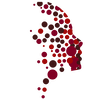Once a dysphagia has been diagnosed, proper management is critical to the patient’s health as well as to maximize their overall function in regard to swallowing.
In this practice, there are three main ways we manage dysphagia: dietary guidelines, intake modifications, therapy and medical management. Typically, most patients are prescribed a combination of these, although each management plan is unique in addressing the specific needs of every individual patient/circumstances. The SLP staff will detail the management plan using the following components.
In this practice, there are three main ways we manage dysphagia: dietary guidelines, intake modifications, therapy and medical management. Typically, most patients are prescribed a combination of these, although each management plan is unique in addressing the specific needs of every individual patient/circumstances. The SLP staff will detail the management plan using the following components.
Dietary Guidelines
The SLP staff will thoroughly explain, as well as provide written information, regarding the dietary guidelines you are to follow. This addresses the types of foods you eat, how much to eat at one time and how often you should eat. If you have questions regarding how certain foods may/may not be appropriate to eat, you should always ask the SLP staff before including in your diet. Here we have provided links to the dietary guideline handouts we provide in the office. Although these provide a basic overview, and specific questions you have should always be addressed to the staff.
Intake Modifications
The SLP staff will thoroughly explain specific instructions for how you eat/drink. Using intake modifications often allows patients to eat a higher level diet (more regular diet) than they may be safely able to without the modifications. For example, a patient may be able to eat a Puree diet well, although has more difficulty when foods are not pureed. However, the SLP staff has determined that through the use of multiple swallows and alternating liquids, more solid foods can be just as safely eaten. In this case, the patient is able to eat a Soft diet, instead of being restricted to Purees.
This is a list of typical intake modifications commonly used in this practice. You will have a custom plan designed for you that may include one or more of the following:
It is very important to use the intake modifications you are prescribed. In most cases, these modifications, along with the dietary guidelines, are what will allow you to eat in the safest and most efficient manner. Failure to comply with the modifications and dietary guidelines as prescribed can be dangerous to your health. Your intake modifications will be explained and a list of these will also be provided to you to take home. Only use the modifications prescribed to YOU! Attempting to use alternate modifications may be extremely unsafe.
This is a list of typical intake modifications commonly used in this practice. You will have a custom plan designed for you that may include one or more of the following:
- <1 tsp Bites of Food
- 3 Swallows Before Another Bite of Food
- Take a Sip of Liquid After a Bite of Food
- Chew Thoroughly - “Overchew”
- Chin-Tuck
- Head-Turn
- Head-Tilt
- Chin-Raise
- Lean Back
- Hold your Breath, Then Swallow
- Hold your Breath, Then Swallow, Then Cough
- Swallow “Hard”
- “Hold” your Swallow
- Cough After you Swallow
- Always Use a Straw
- Never Use a Straw
- Place the Food on the Right or Left Side of your Mouth
- Place the Food in the Back of your Mouth
It is very important to use the intake modifications you are prescribed. In most cases, these modifications, along with the dietary guidelines, are what will allow you to eat in the safest and most efficient manner. Failure to comply with the modifications and dietary guidelines as prescribed can be dangerous to your health. Your intake modifications will be explained and a list of these will also be provided to you to take home. Only use the modifications prescribed to YOU! Attempting to use alternate modifications may be extremely unsafe.

